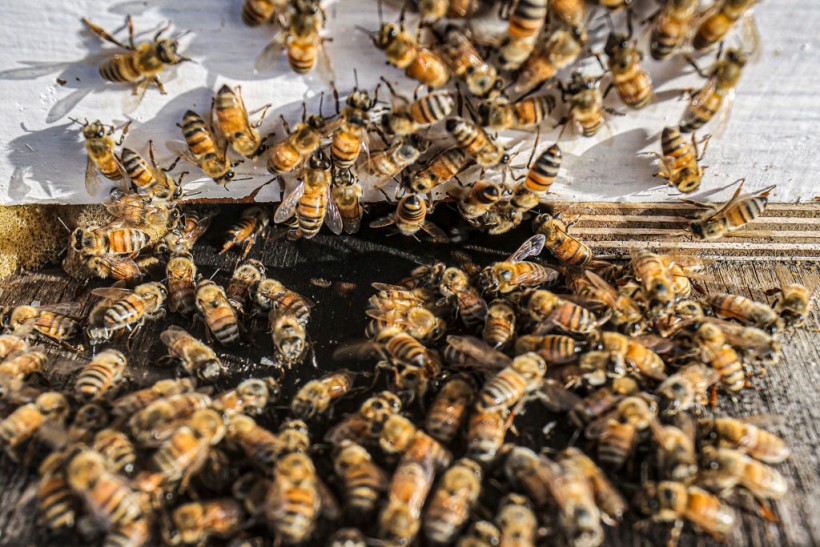A Kentucky man died due to respiratory failure after a swarm of bees attacked him on his porch.
Authorities stated in a statement that the 59-year-old man, Michael Alford, was moving a bag of potting soil in Harlan County on Monday when he was stung 15 to 20 times by a swarm of bees from within the box.
The man's relatives began CPR, which the first responders continued, but "those attempts failed."
Harlan's deputy coroner, John Jones, later ruled Alford dead at a local hospital.
The police added that the man might have had preexisting health difficulties that were likely exacerbated by the beestings, but he declined to elaborate on the particular nature of these conditions due to patient privacy concerns.
Alford was a former gas station manager who lived his entire life in Harlan County and enjoyed four-wheeling, playing the piano, collecting knives, and whittling, according to his obituary.
His wife Chi-Chi Margalene "Margo" Hughes Alford, three daughters, and 11 grandchildren survive him.
Read Also: Unusual Bee Attack Injures, Hospitalizes Mallgoers in Mexico
Deaths from bees' attacks
The US Centers for Disease Control and Prevention (CDC) reported 788 deaths from hornet, wasp, and bee stings from 2011 to 2021, with an average of 72 deaths per year.
Overall, men accounted for 84% of all fatalities.
A 20-year-old Ohio man was bitten at least 20,000 times by bees while chopping branches last September. After being placed in a medically-induced coma, the man finally recovered.
Meanwhile, an Arizona man died and two others were hospitalized in 2021 after being stung hundreds of times by bees.
What should you do when bees sting you?
Bees play an important role in the food chain. They are in charge of pollinating popular fruits and vegetables like apples and squash. Their sting, on the other hand, can inflict pain and suffering.
When a bee stings someone, the sharp stinger penetrates the skin. It then detaches from the bee and attaches to the skin with its barb, a sharp hook that holds the stinger in place. The venom sac is usually attached to the top of the stinger.
The venom affects the body and immune system, and everyone reacts differently to it.
According to research, people may become increasingly vulnerable to the venom over time. This increased sensitivity can lead to an allergic reaction, even if the individual has never experienced one before.
If this occurs, more serious symptoms will emerge, and the individual should seek medical assistance as soon as possible.
In the event of a bee, wasp, or hornet sting, the CDC recommends cleaning the affected area with soap and water and removing the stinger with gauze wipes or by scraping the area with a fingernail.
It is advised not to squeeze the stinger or use tweezers and to administer ice to the affected area to decrease swelling.
If a person has severe symptoms, such as nausea or difficulty breathing, they should seek medical treatment right away. They are most likely experiencing an allergic reaction, which can be fatal.
Related Article: Sting Operation: Ohio Man Wakes Up from Coma after Receiving 20,000 Bee Stings and Ingesting 30 Bees
Related Video:
© 2024 NatureWorldNews.com All rights reserved. Do not reproduce without permission.




![Climate Change is Reducing Dust Levels Worldwide as Arctic Temperature Warms [Study]](https://1471793142.rsc.cdn77.org/data/thumbs/full/70320/280/157/50/40/climate-change-is-reducing-dust-levels-worldwide-as-arctic-temperature-warms-study.jpg)

